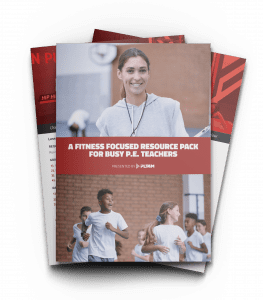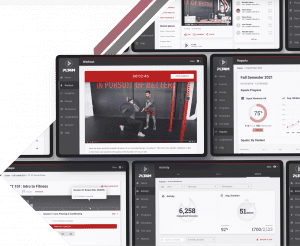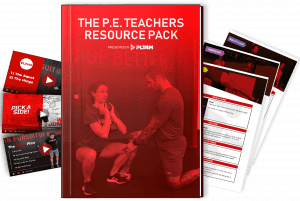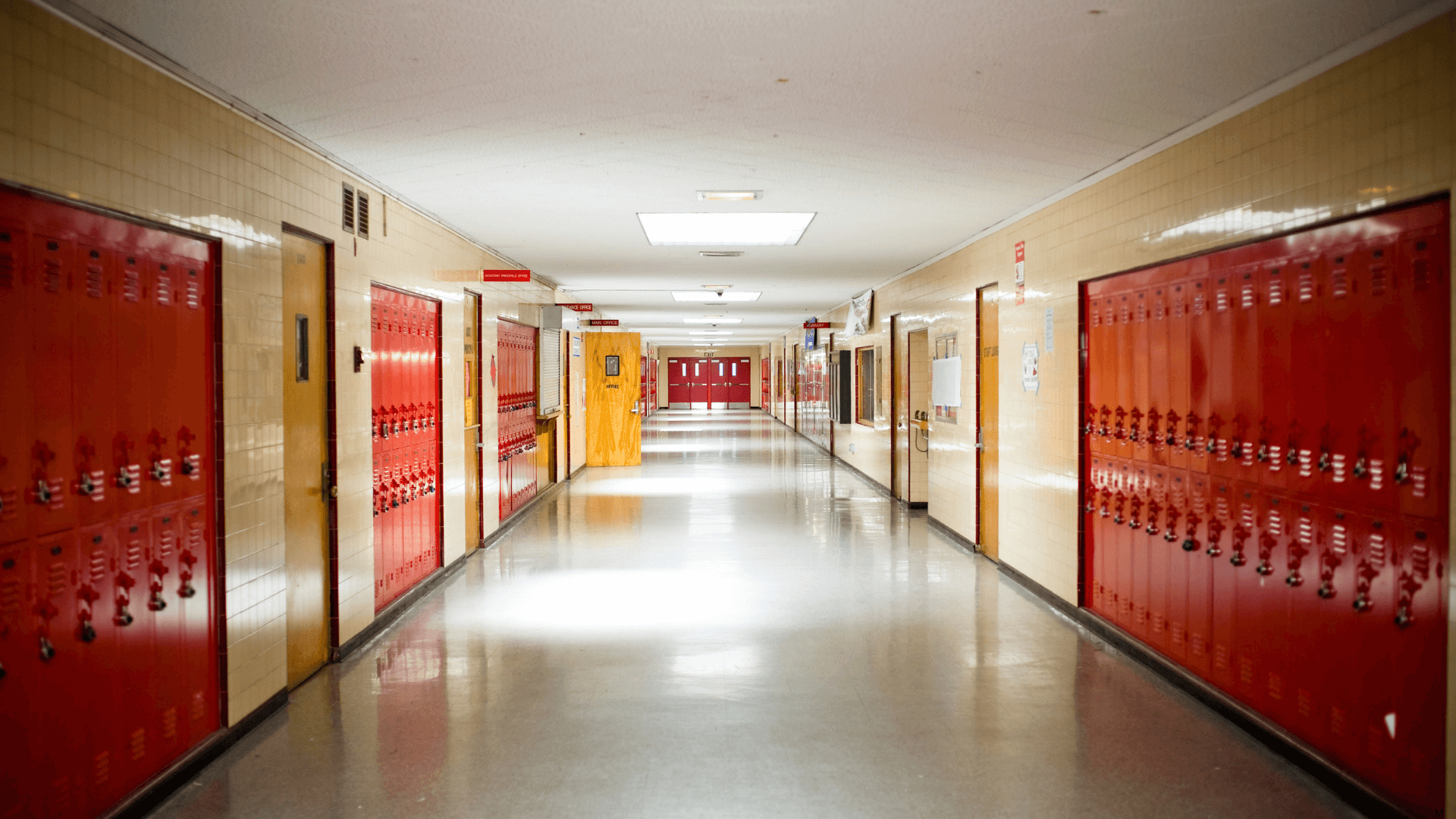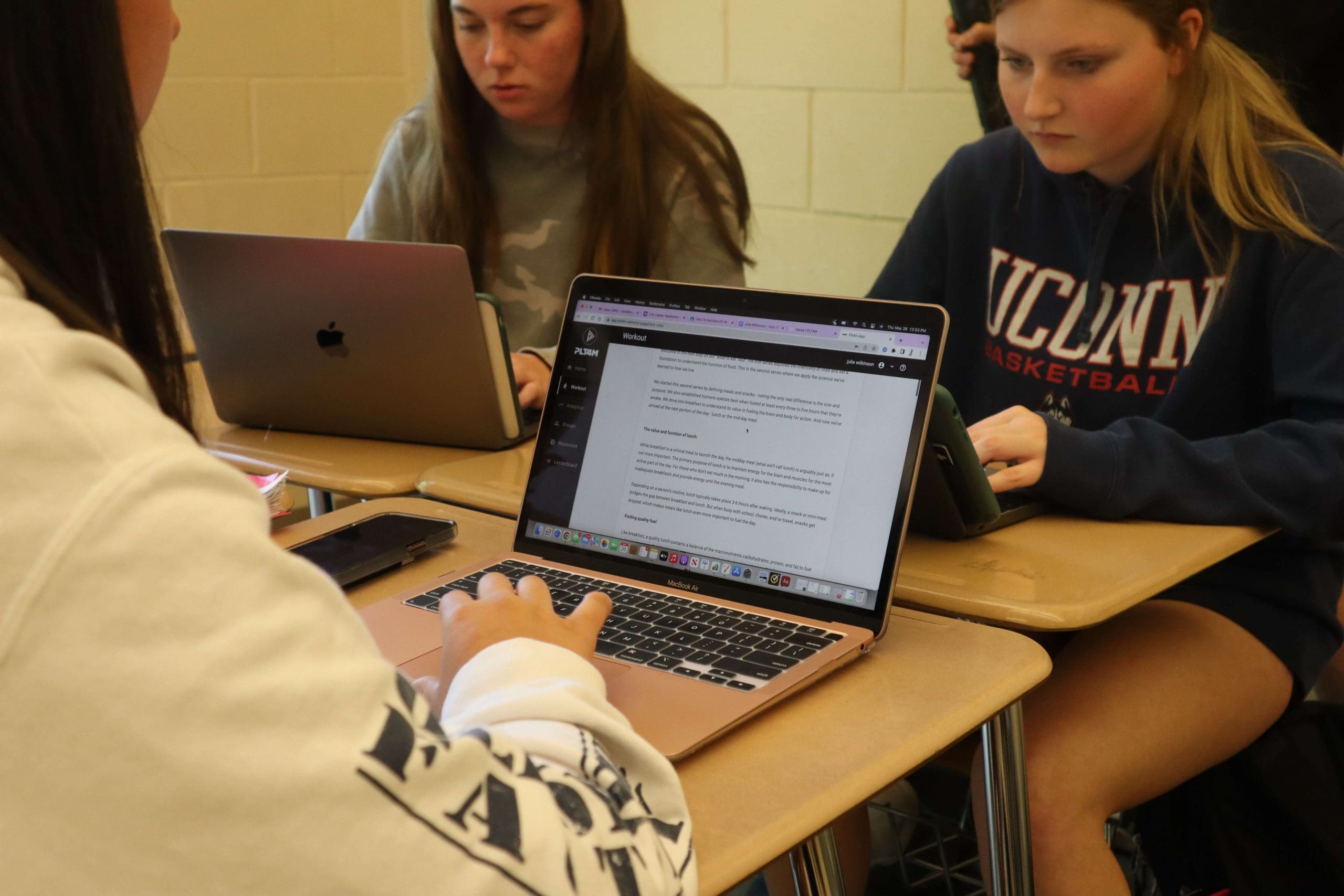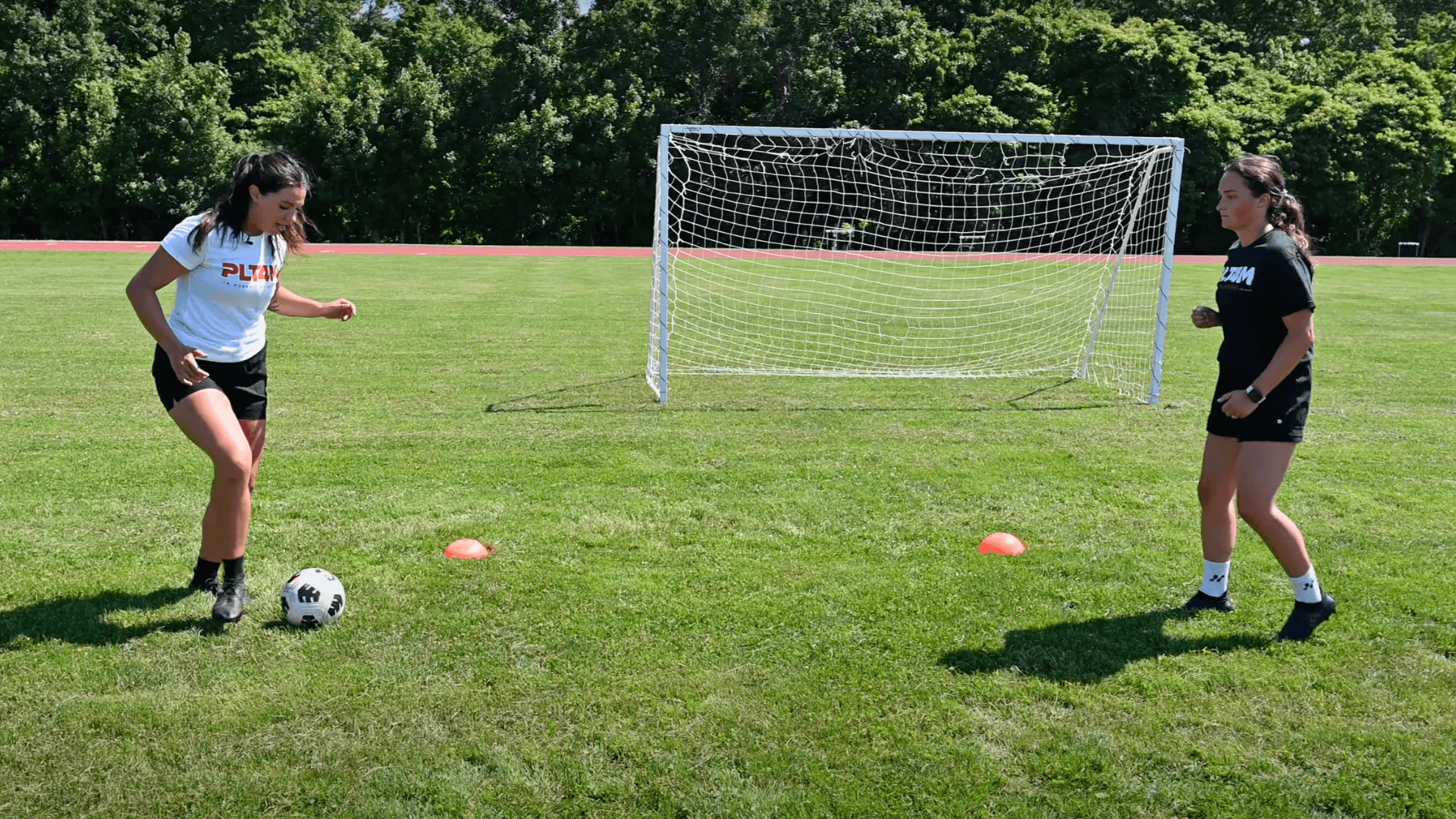Classroom management strategies aim to help teachers make the most out of large class sizes, short class periods, and all sorts of other variables. Each school might be a little different, but take these strategies back to your physical education setting and give them a try!
The Unique Challenges of The PE Classroom
When people picture a school classroom, they immediately envision chairs, desks, and a whiteboard. They think of one teacher with maybe upwards of 20 or so students. Because of that, classroom management often centers around strategies that fit this format.
But physical education does not fit into this traditional classroom model. Classes take place in gymnasiums, fitness centers, and outdoors. Teachers are responsible for upwards of 50 students from multiple grade levels. As a result, classroom management in physical education requires a unique set of strategies.

4 Classroom Management Strategies For PE
Every school has a slightly different setup. But, regardless of your school’s structure, these four strategies can help to manage the chaos that can come from running a physical education class.
Within each class, teachers can:
- Group Students By Experience
- Be Realistic about Class Time
- Develop Routines
- Utilize Technology & Resources
None of these classroom management strategies are overcomplicated or take hours to implement. It is not about reinventing the wheel, but instead, tweaking your approach to get the most out of class and create less stress for you as a teacher!
Check out the highlights in this 5 minute video!
1) Group Students By Experience
Students will struggle if something is too hard and lose interest if it is too easy. As they grow frustrated or bored, they can start to make managing a busy class even more difficult.
Grouping by experience and ability is very common in other subjects. Guidance counselors work with students and teachers to filter kids into appropriate classes. Think about the prevalence of AP classes in just about every subject.
And while some schools do have experience-level class offerings for PE like an intro or advanced strength training class, PE is typically all one big class in many schools. This means PE teachers are left to do the grouping themselves.
Experience Levels in P.E.
How you classify your “experience levels” will ultimately be predicated on the type of unit you are teaching. Something like Fitness, Weight Training or Yoga will have a much broader spectrum of experience levels, and for safety reasons, requires a strong foundation.
But within any topic or subject, you likely will find some combination of the three groups:
- Beginner
- Intermediate
- Advanced
Identifying Students’ capabilities and bucketing them into these groups allows you as the teacher to tailor lessons to fit their experience level within these groups. For example, a beginner student can navigate an introduction to the air squat, while an intermediate or advanced student can start to squat using differing forms of resistance, such as a Kettle Bell for Intermediate and a loaded barbell for advanced.
Tasked with lessons built specifically for their level of experience creates a more satisfying and rewarding experience for students, and can help boost motivation and participation.
Differentiation is the key.
Lesson Plans for Busy P.E. Teachers!
15 Fitness Focused lessons, ready to be put to use right away! Get your P.E Resource Pack today.
2) Be Realistic About Class Time
Another unique challenge within PE is managing class time. Where other classes start and end when the bell rings, PE has an added element of navigating ‘dress out’ time. Suddenly, a class period is shrunk down because of changing, setup, and cleanup.
On the flip side, occupying 90 minutes of activity based class periods in block schedules creates a whole different slew of challenges.
If you have short classes, it is important to be realistic with your class time! Don’t try and cram an hour-long lesson into a 45-minute window. Rather, adjust lessons to fit the class time, and if needed, allow one lesson to extend over two class periods.
If you have extra long classes, forcing kids to exercise for 90 straight minutes may not be appropriate. Using class time to cover two different types of lessons can be a great way to engage more kids while covering a broader set of materials.
For example, many PLT4M schools that have block schedules will use the first 45 minutes for a fitness or weight training workout. Then, they help kids recover by using a Yoga or Mobility focused lesson. You could swap out the workout for an activity unit like Pickle Ball, and then spend time on the back half with 20 minutes of Mindfulness or Stretching.
3) Develop Routines
One of the best ways to maximize the limited time is by developing routines. Students thrive off of a routine and structure. Creating simple expectations around student responsibilities can help create a better class flow.
These can come in many different forms:
- Group warmup or opening ‘team’ meeting
- Dedicated mid-class regroup for water or bathroom break
- Exit tickets – a task or activity assignment that is the exit ticket for the day
Be careful not to mistake routine for repetition. Instead, think of the different class parts as buckets or benchmarks that students can always return to, but they are not always the same!
For example, class warmup might not always be a timed one-mile run around the track, but instead a 5-minute movement activity that can be varied and fun. But it is always 5 minutes!
Ready to Learn More?
Schedule a free 10 minute consultation to see how the PLT4M system can help save you time, and empower student learning!
4) Utilize Technology & Resources
You might be thinking that the best way to manage your classroom would be to have students not using their phones or technology. Social media and all the text messages are a distraction, right?
But if you flip the script and turn technology into a tool for PE, the benefits are endless. All of your other classroom strategies listed above become more manageable.
If you have identified different experience levels, you can use technology to deliver personalized lessons to kids based on what bucket that fall in. This creates a more engaging experience for each student.
Additionally, technology can streamline the “set up” time as kids grow accustomed to coming in and accessing lessons on their device. This can save you valuable time on the front end of class.
Technology also provides an opportunity to “flip the classroom”, delivering lessons that can be reviewed and digested before class even starts. Now, when students come to class, they are familiar with your chosen warm up routine, and have less questions about different aspects of the lesson.
If that goal is to manage a classroom, technology helps you not go at it alone!
Schools In Action! Tech in the PE classroom.
Mobility Day is @PLT4M Yoga in Advanced PE today. @BR_Schools pic.twitter.com/oiWa3Un0cX
— Josh Thompson (@coachthompson44) January 12, 2022
School year is underway & the new iPads are in! Each & every one of our 9 racks are equipped with @PLT4M to service our freshmen fitness classes & all of our sports teams! @DSHA_Strength #dasherstrength pic.twitter.com/TgksIu0IqN
— BCal✊🏽 (@brian_calhoun2) August 24, 2021
Key Takeaways on Classroom Management Strategies for PE
P.E Programming Made Easy
A resource pack P.E. teachers can use to roll out lesson plans into their classes fast, and effortlessly.

